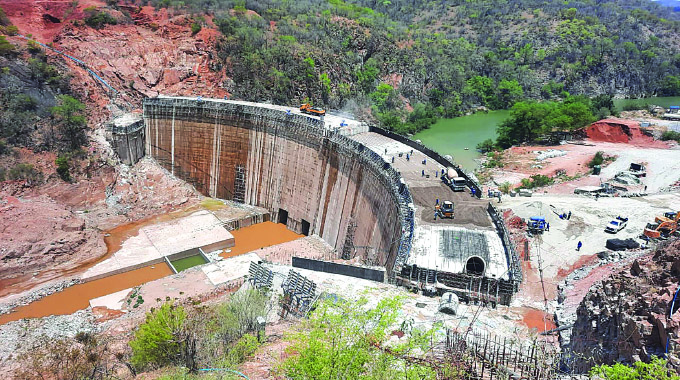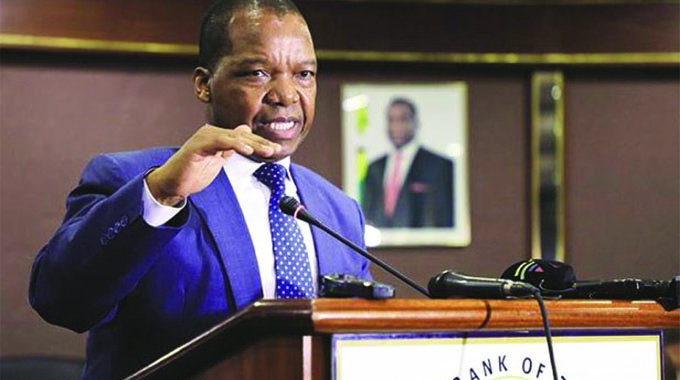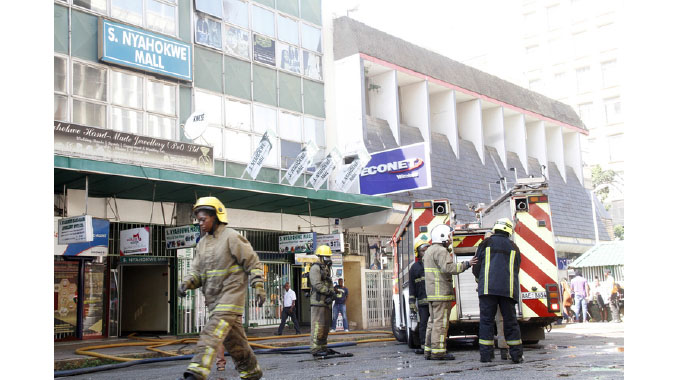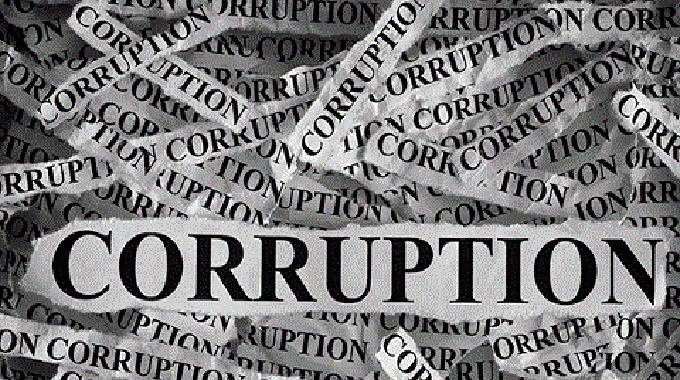EDITORIAL COMMENT: Water progress keeps up the growth

Zimbabwe’s two major urban centres are short of water, but for different reasons which drive the way Government needs to respond and now is responding.
Bulawayo is in many ways the simplest, if the most expensive, to fix.
The city accumulated during the colonial era a group of small dams in its vicinity, nothing dramatic as there is no major river anywhere close, and the water from these was just enough to cope.
A bit of expansion after independence strained the system, but longer term climate change, somewhat lower rainfall in the area, was the killer, and it did not need much an average drop over the seasons.
There were simply no new dam sites nearby, and not very much within a modest radius. So old ideas from early in the 20th century were recycled, pumping water from the top end of Matabeleland North down to the city.
There was a lot of talk and debate, and the pile of files detailing schemes grew higher and dustier.
But the only activity was typing ever longer reports.
Meanwhile, Bulawayo City Council systematised its ever more rigorous rationing, considered a model that other cities could well introduce rather than their vague water cuts when demand exceeds supply, and carefully explained, with its business and residential community, just why a large new source of water was needed.
The pile of paper grew higher, and the dust grew thicker in the filing cabinets.
That was not really helpful.
Then came the Second Republic and President Mnangagwa, who knows Bulawayo and its problems, made the decision to fix the water problem.
The detailed reports and programmes of the highly competent engineers who had studied the problem in both colonial and independence times were to be implemented and the Government went into action under the President.
The project was not cheap, but it was affordable, and in any case would be producing an income when Bulawayo businesses and residents started buying the water they were finally getting.
While one day water from the Zambezi River will have to be pumped to Bulawayo, there is fortunately an interim first stage, damming the Gwayi and Shangani Rivers just below their confluence and using in this first phase the water from the largest two rivers within Matabeleland North, excluding the border Zambezi.
This is the stage we are now in.
The dam is rising and should be finished by the middle of next year, and already water is being impounded by the incomplete dam, so that when the wall is topped out the lake will already be quite large so as the pipeline and treatment works are added there will be water to pump down the pipeline and into the treatment works.
The dam contract was the first step, and the payment plan the first to be worked out.
Then came the pipeline, and a rather good deal has been made with the major supplier of the pipes, with local manufacture included, and the same sort of deal that we have seen with major highway building, bringing in a group of local engineering companies, is laying the pipeline.
Now the final contract, for the new waterworks, has been put out to tender and the final stages of the work should all be completed roughly at the same time and Bulawayo can start crossing off the months until it reaches the stage where when a business or family turns on the taps, water comes out.
Because of the need for a major national project, the third-largest interior dam, the long pipeline and a water treatment plant that can cope with Zimbabwe’s second largest urban authority, there was zero possibility that this could be a city project. It had to be a national project run by the Government.
Harare and its surrounding four towns of Chitungwiza, Epworth, Ruwa and Norton was in a different situation.
The Manyame River, and Harare does have a decent river running past it, was dammed with a rising crescendo of dams in colonial times to provide raw water for Harare area and the towns and farms downstream.
A few years after independence Mazvikadei Dam on a major Manyame tributary took over the main burden of the down stream users, leaving most of the water in the four dams next to Harare for urban users.
The 1980s saw that first post-independence council drive one of the most remarkable water and sewage treatment programmes in the country’s history, largely because Zanu PF made sure it nominated top class councillors and the people voted them in, so the council understood what the technical experts were recommending and could implement.
This resulted by 1991 with the doubling of Harare’s water treatment capacity, with enough water in the four dams to feed the expanded plant.
Regrettably the last 20 years have seen a major retreat from the competence of that 1980s council and treatment capacity has more than halved while the urban population almost doubled.
The result is a man-made shortage.
The first central Government intervention under the Second Republic was to limit further decline, while encouraging Harare to start fixing what it had, if necessary using its devolution funds.
At the same time the Government did make the decision to build a fifth dam, at Kunzvi.
This dam will not be the largest, in fact it will be third largest, but it unlike the other four in the west of Harare Metropolitan, it will be to the north and east.
The main provincial gain from Kunzvi is from where it is rather than what it is.
Harare metropolitan’s highest points are to the east and north.
Its water supply is to the south and west, so there is a lot of uphill pumping, and that is one reason why the extreme water shortages are to the east, and this includes Chitungwiza when you look at altitudes.
So Kunzvi not only provides a new flow of water into the metropolitan province, but does this into the area that is desperately short of water, not just short.
That justified the Government intervention, and again it took the second Republic to convert about 40 years of studies and expert research into contracts, and bring in the dam builders.
So the Second Republic has already seen the work well in progress to fix Bulawayo water supply, an d a more modest contract to at least ameliorate Harare’s deficiencies while everyone prays the council can fix what was there at the turn of the century.










Comments